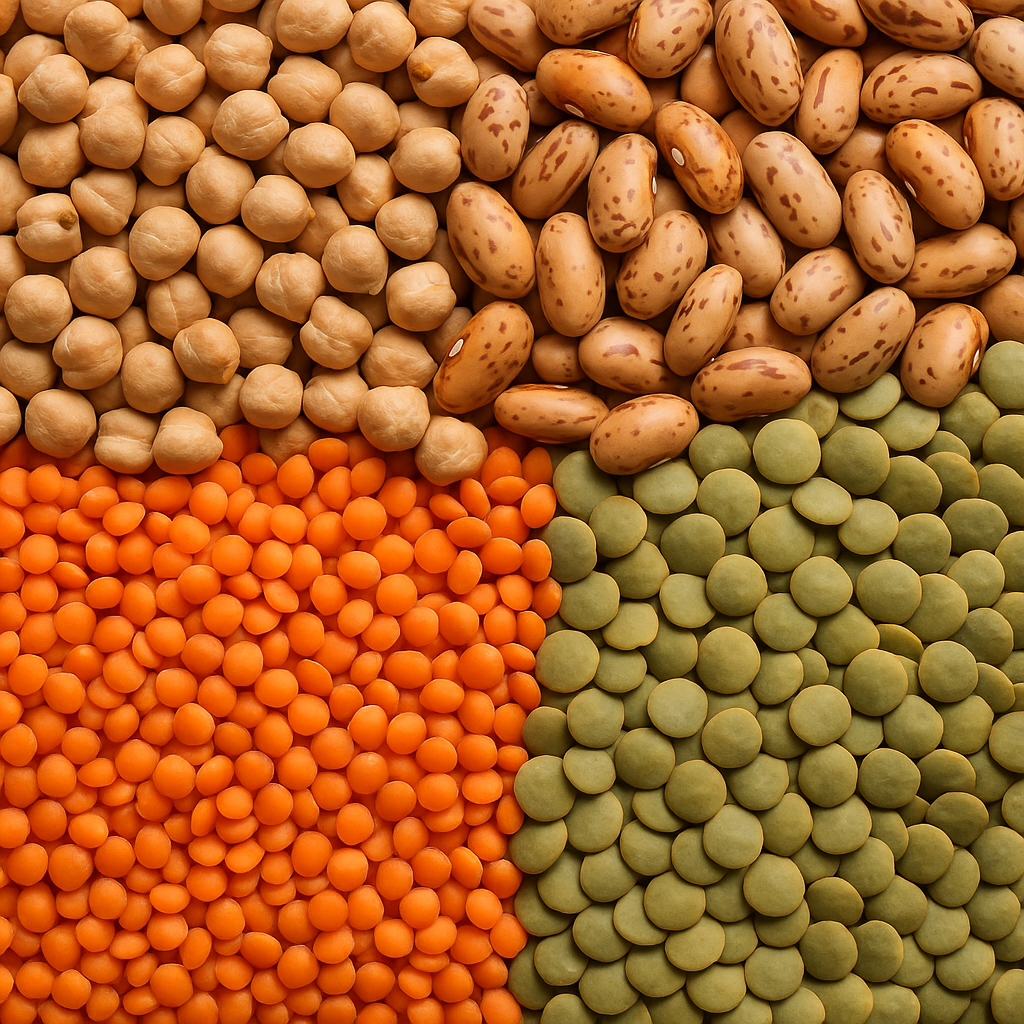Pulses and Their Significance in Global Trade
Pulses — including lentils, chickpeas, beans, and peas — are vital to global food security, nutrition, and sustainable agriculture. Rich in protein, fiber, and essential nutrients, pulses form a dietary staple for billions, particularly in developing countries. With rising health awareness and demand for plant-based protein, global trade in pulses has expanded significantly over the past decade.
In this blog, we explore the top import markets for pulses, their importance in global trade, and what this means for exporters worldwide.
Why Are Pulses Important in Global Trade?
- Nutrition & Food Security: Pulses are key to fighting malnutrition in many regions due to their affordability and nutritional value.
- Sustainable Agriculture: Pulses help improve soil fertility through nitrogen fixation and require less water, making them climate-resilient crops.
- Plant-Based Protein Trend: Growing vegetarian and vegan populations in developed countries are increasing demand for pulses in health foods, snacks, and meat substitutes.
- Food Processing Industry Demand: Pulses are widely used in food processing for making flours, snacks, and protein isolates.
Top Import Markets for Pulses
1. India
- Largest consumer and importer of pulses globally.
- Key imports: lentils, yellow peas, chickpeas.
- Driven by domestic demand-supply gaps and a population exceeding 1.4 billion.
- Significance: India’s import policy, tariffs, and seasonal production impact global pulse prices.
2. China
- Rapidly emerging as a major importer, especially of dry peas and lentils.
- Increasing demand for plant-based food, snacks, and protein-rich diets.
- Imports from Canada, Australia, Myanmar, and the USA.
- Significance: China’s shift towards healthier diets is shaping future demand.
3. Bangladesh
- Major importer of red lentils and chickpeas.
- Limited domestic production leads to reliance on imports.
- Significance: A key South Asian market for exporters, especially from Canada and Australia.
4. Pakistan
- Significant importer of lentils and dry peas.
- Demand driven by food industry and traditional diets.
- Significance: Regional proximity and trade agreements influence sourcing.
5. Egypt
- Among the top importers of lentils and chickpeas in North Africa.
- Pulses are a dietary staple and used extensively in processed foods.
- Significance: Acts as a gateway to African and Middle Eastern pulse markets.
6. European Union (EU)
- Major importers: Italy, Spain, UK, Germany.
- Focus on organic pulses, plant-based foods, and healthy diets.
- Increasing demand in vegan and vegetarian segments.
- Significance: Strict quality and safety standards but high-value market for exporters.
7. United Arab Emirates (UAE)
- Imports for local consumption and re-export.
- Demand driven by expatriate population from South Asia and Africa.
- Significance: UAE is a trade hub for re-exporting pulses to GCC and African countries.
8. United States
- Imports specialty pulses such as chickpeas, mung beans, and lentils.
- Used in ethnic cuisines, health foods, and plant-based proteins.
- Significance: Diversified demand from both consumers and food processors.
Global Trade Impact
- Price Volatility: Pulse prices are sensitive to weather, production cycles, and import policies, especially in India and China.
- Trade Policies: Tariff changes, phytosanitary regulations, and import quotas can impact flow and pricing.
- Supply Chain Dynamics: Major exporters like Canada, Australia, and Myanmar closely monitor the needs and import patterns of these top markets.
- Opportunities for Exporters: Rising demand for plant-based foods, sustainable agriculture, and processed pulse-based products is creating new market entry opportunities worldwide.
Conclusion
The global pulse trade is expanding, fueled by health trends, population growth, and sustainable food systems. Understanding the top import markets for pulses — their demand drivers, trade policies, and consumption patterns — is crucial for exporters and stakeholders. As food security and plant-based diets become global priorities, pulses are positioned at the center of nutrition, sustainability, and trade growth.

